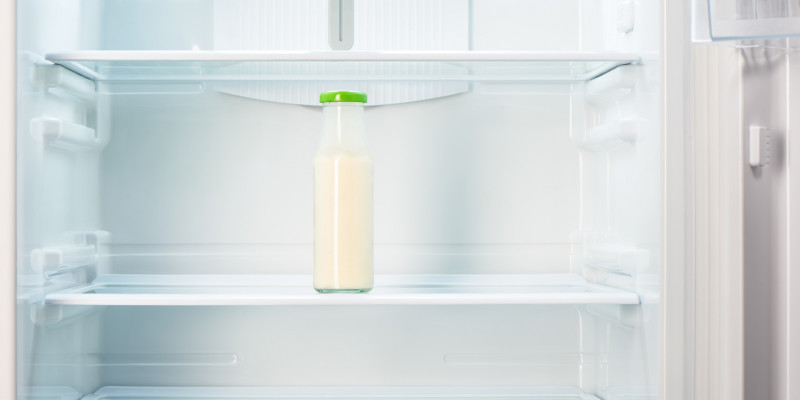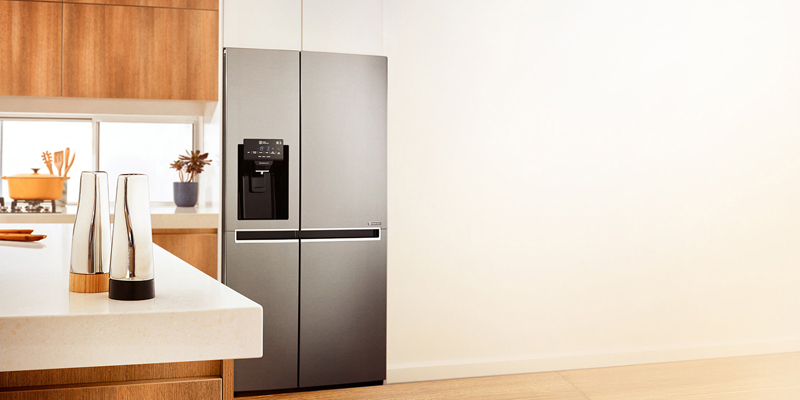Most housewives believe that the refrigerator should be defrosted as needed. Say, if a pack of dumplings no longer fits into the freezer due to a thick layer of snow and ice, then it's time to get supplies and prepare everything urgently so as not to spoil.
And, in fact, this approach is not devoid of logic. Modern refrigerators are equipped with special technologies to prevent the formation of ice, which is why defrosting is required quite rarely. In addition, 'preventive defrosting' leads to increased energy consumption to start the compressor and to food spoilage because they have to be stored anywhere and in completely unsuitable conditions.
However, working with a layer of ice on the walls also leads to increased power consumption and a decrease in the operating period of the device. So you need to arrange preventive defrosting. But not too often.
There are two technologies for preventing the formation of ice – drip and No Frost ('know frost'). And they differ not only in the way they work. Defrost refrigerators with different technologies to prevent the formation of an ice crust should be done at different intervals.
Often the frequency of such procedures is indicated directly in the instructions for the existing household appliances.
How often do you need to defrost a refrigerator with a drip ice prevention system?

A refrigerator with a drip system for preventing the formation of ice (also called Frost Free) must be defrosted once every 2-3 months.
The drip system means equipping the refrigerator or freezer compartment with a special 'evaporation chamber'. In fact, it looks like a panel on which refrigerant is supplied separately. It is usually located on the back wall of the refrigerator or freezer.
This panel is colder than the rest of the inner walls of the compartment. And therefore, excess moisture settles on it, freezing in the form of small droplets. Then the electronics controlling the compressor raises the temperature of the 'evaporation chamber', the ice melts and flows in the form of small droplets into a special tray.
As a result, household appliances, in fact, defrost themselves. But in the 'freezer', due to the constantly low temperatures, moisture condensation and its subsequent removal do not work as well as in the main one. And you have to defrost it manually. This should be done, as mentioned above, once every 2-3 months.
If the ice crust forms more frequently, improper operation of the device may be to blame. Main reasons:
-
Leakage of the 'freezer' or main compartment. For example, due to damage to the gasket on the door (it is cracked, cut, fungus has appeared on it). It is worth carefully considering the entire gasket and, if necessary, replacing it;
-
Frequent freezing of hot food or liquids under unsuitable conditions. If you want to make ice cubes or, for example, stock up on ice-cream broth, you should place trays with them on a special shelf;
-
Improper placement of household appliances. The device requires air exchange, so it is necessary that it stands 5-10 centimeters from the walls (the exact distance is indicated in the instructions). Also, it should not be placed next to a gas stove or other heating elements.
In addition, for refrigerators with drip systems, it is recommended to regularly clean or rinse the thawed liquid receptacle. It is advisable to do this every month.
How often to defrost a No Frost refrigerator

Refrigerators with a No Frost system must be defrosted once every 5-6 months.
This frequency is sufficient to maintain the performance of the device. A 'know frost' system involves equipping the refrigerator and freezer with either a fan that 'blows' the air or a second ring of refrigerant pipes that is powered by a separate compressor. All this creates convection of air masses, which does not allow the formation of ice.
If the refrigerator, which is equipped with 'know frost', has to be defrosted more often than every six months, it is worth checking the correct operation:
-
The door must be airtight. Its gasket should not be damaged from fungus, mechanical cuts or deep scratches, cracks from drying out;
-
The device should stand 5-10 centimeters from the walls. The exact distance of placement is indicated in the instructions;
-
If the refrigerator or freezer has a fan, make sure it is running and not covered by any food;
-
If your model of household appliances uses a full-fledged two-compressor system (it may be called Full No Frost), then check the operation of both compressors. For this, it is advisable to call the master.
When defrosting modern refrigerators with the No Frost system, it is not recommended to use 'quick methods' such as placing a heating pad or a saucepan of hot water in an icy 'freezer'. It is enough to wait until they thaw themselves.









